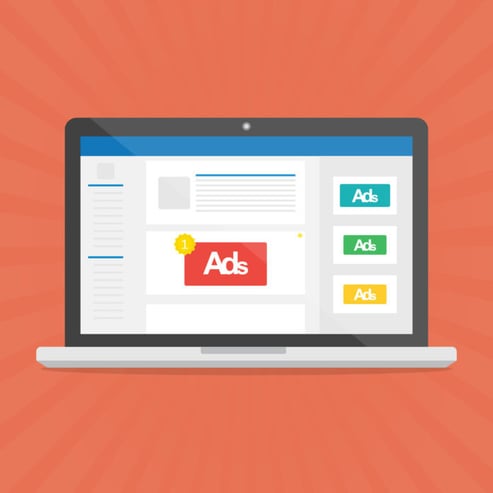
Navigating the Complex World of Advertising in Digital Publishing
Very few things can kill a publication quicker than overwhelming ads. Though traditionally publishers have spent little on advertising ventures, instead focusing on word-of-mouth and booksellers to push sales, times have changed. Direct advertising plays a much larger role today than it ever has before. Publishers are now connecting with and (in some cases) selling to their readers directly through ads.
Most publishers rely on ad networks to capture numerous advertisers to invest in their products. These networks procure a share of the revenue in return; for example, Google AdSense pays 68% of revenue to its publishers and keeps the remaining 32%. Yet ironically, there’s very little investment required here from publishers themselves. Programs like Adsense are free, virtually run themselves once they’re configured properly, and do not require any major technical know-how to use. That’s a lot of potential money earned without much effort, and that’s a problem.
Digital publishers now have a very lucrative incentive to prioritize advertisements over quality content. It’s a growing concern, so much so that the biggest tech and advertising giants, including Facebook and Microsoft, are devising a strategy to stamp out the web’s worst ad offenders as rated by consumers.
Proponents of online advertising, however, such as Larry Downes of The Washington Post, underscore the viability of ads in relation to the “free Internet” model: “if no one views ads, after all, advertisers will stop paying for them, and without ads the largely free content of the Internet has no visible means of financial support.” Is Downes inadvertently (or perhaps prophetically) alluding to the ill-fated futures of the Internet and publishers alike?
So where’s the middle ground? To find it, publishers must put their readers first. Successful ad campaigns entail a ready and willing audience. They won’t garner any click-throughs if there isn’t anyone around to, well, click through them. Publishers can attract readers and advertisers by channeling their efforts into creating high-quality content from the very beginning. Neglecting to do so can marginalize entire advertising strategies and turn visitors off.
Moreover, great online content can benefit from advertisements that are compelling and unobtrusive. Though spammy ad tactics have bolstered the adoption of ad blockers in recent years, with 26% of consumers utilizing the technology in the U.S. alone, improving the advertising experience could be the end-all solution here. It’s true: most consumers install ad blockers because they find a majority of banners distracting, but a sizable portion hasn’t yet succumbed to banner blindness. There’s still some interest there, according to the data.
PageFair and Adobe’s recent report revealed two major findings. Nearly half (45%) of those surveyed said they install ad-blocking software because they find ads annoying; however, 30% said they do so to block only “a subset of specific advertising.” This is encouraging news. Publishers can take this opportunity to listen to their readers, tailor a relevant advertising experience to that 30%, and respect users’ privacy. With Joomag, for example, publishers can run native advertisements alongside their digital content. Native ads are highly scalable, provide context, and (to avoid disrupting the consumer’s viewing experience) blend in with relevant content seamlessly. In other words, they make sense.
The bottom line: publishers must strike the perfect balance between quality content and quality advertising. Consumers aren’t repulsed by all ads, only the bad ones. And that’s why publishers should prioritize their readers’ interests over content that’s easily shareable and splashed with off-putting banners. But are they too late?
FAQ
How have advertising strategies in digital publishing evolved?
Answer: Advertising strategies have significantly shifted from minimal direct advertising to a more integrated approach, where publishers now actively engage readers through ads. This change reflects the digital era's demand for direct connections with readers, leveraging ad networks like Google AdSense to monetize content effectively with minimal effort from publishers.
What challenges do publishers face with the rise of ad blockers?
Answer: The rise of ad blockers, used by 26% of U.S. consumers, poses a challenge to publishers relying on ads for revenue. Many users find ads annoying or distracting, leading to increased use of ad-blocking software. The challenge for publishers is to create advertisements that are compelling and unobtrusive, to retain reader engagement without compromising the content's quality.
How can publishers find a balance between ads and content quality?
Answer: Publishers can strike a balance by prioritizing high-quality content that meets readers' interests and integrating native advertisements that blend seamlessly with this content. Listening to reader feedback and tailoring ads to enhance the reading experience without being intrusive can help maintain this balance. It's about respecting the reader's experience while also leveraging ads for revenue.


